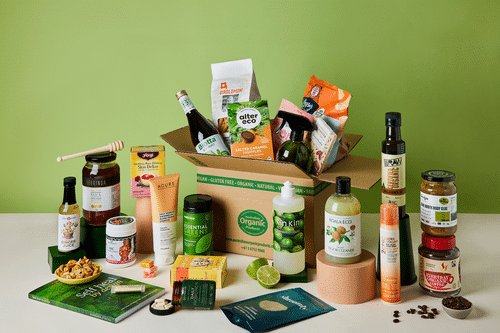Coral reef snorkeling in Australia is more than a leisure activity—it’s a breathtaking journey into some of the most biologically diverse and visually stunning underwater ecosystems on Earth. Stretching across two coasts and offering world-class visibility, Australia is home to over 3,000 coral reef systems, from the legendary Great Barrier Reef to the serene and less-crowded Ningaloo Reef. These underwater gardens host a symphony of colors, creatures, and conservation success stories, making them a magnet for both seasoned snorkelers and beginners alike.
The country’s marine reserves and reef parks are managed with some of the world’s most rigorous environmental protections. Over 400 types of coral and 1,500 species of fish live in Australia’s reef ecosystems, many of which can be seen up close while snorkeling. Sites like Green Island, Heron Island, and Agincourt Reef offer easy water access, calm lagoons, and guided tours for families, solo travelers, and marine enthusiasts. These destinations are not just about beauty—they are integral to Australia’s economy, attracting over two million tourists each year according to Tourism Australia.
One of the key attractions for snorkelers is the chance to swim alongside rare marine species like green sea turtles, manta rays, and even gentle whale sharks at certain times of the year. The Australian Institute of Marine Science reports that the Great Barrier Reef alone supports six of the world’s seven turtle species. Moreover, national parks like Fitzroy Island and Lord Howe Island maintain strict visitor limits and eco-certifications, ensuring that the coral ecosystems remain unspoiled for future generations.
Of course, coral reef snorkeling in Australia is not only about discovery but also about responsibility. With growing concerns over climate change and coral bleaching, many eco-tourism companies and conservationists emphasize low-impact snorkeling practices. Visitors are increasingly encouraged to use reef-safe sunscreen, avoid physical contact with coral, and participate in citizen science programs like Reef Life Survey. Even large-scale tour operators such as Ocean Safari and Passions of Paradise have adopted eco-friendly models certified by Ecotourism Australia, reflecting the country’s commitment to marine sustainability.
Whether you’re floating above shallow coral gardens or drifting near steep drop-offs where rays and reef sharks glide past, the experience is one of nature’s finest. With excellent safety standards, high-quality snorkeling gear rentals, and a growing network of marine guides trained in conservation education, Australia’s coral reefs are one of the safest and most enriching marine environments in the world. From the adrenaline of encountering a giant clam in the wild to the serenity of observing neon-colored nudibranchs, every dive into these waters offers something unforgettable.
Best Locations for Coral Reef Snorkeling in Australia
Great Barrier Reef: A World Wonder for Snorkelers
The Great Barrier Reef is the world’s largest coral reef system, stretching over 2,300 kilometers and composed of more than 2,900 individual reefs. According to the Australian Government’s Department of Climate Change, Energy, the Environment and Water, it attracts over 2 million visitors annually. As the most iconic spot for coral reef snorkeling in Australia, the reef offers extraordinary visibility, calm waters, and vibrant biodiversity. Snorkelers can encounter over 1,500 species of fish and 400 types of coral.
Ningaloo Reef: Western Australia’s Hidden Gem
Located off the coast of Western Australia, Ningaloo Reef is the world’s largest fringing reef, extending 260 kilometers. It is a UNESCO World Heritage Site and is less crowded than the Great Barrier Reef, making it ideal for a more intimate experience. More than 300 coral species and 500 fish species call this reef home. Seasonal whale shark encounters draw snorkelers from across the globe.
Fitzroy Island: Perfect for Beginners
Only 29 kilometers from Cairns, Fitzroy Island offers shallow reef systems ideal for first-time snorkelers. The island features accessible beaches like Welcome Bay and Nudey Beach, with corals just meters from the shore. More than 90% of the island is National Park, offering eco-friendly snorkeling experiences.
Lord Howe Island: Snorkel in a Marine Park
This UNESCO-listed island in the Tasman Sea features the world’s southernmost coral reef. The island limits visitors to 400 at a time, preserving its ecosystem. Snorkelers can explore crystal-clear lagoons teeming with more than 500 species of fish and 90 coral species.
Green Island: A Reef and Rainforest Combo
Green Island, just 45 minutes from Cairns by ferry, is a unique coral cay with lush rainforest and fringing reef. More than 200 types of hard and soft coral and numerous sea turtles are found here. It’s a family-friendly spot ideal for coral reef snorkeling in Australia.
Heron Island: A Haven for Marine Biodiversity
Located on the southern Great Barrier Reef, Heron Island is home to over 900 of the 1,500 species of fish found in the reef. With snorkel spots directly off the beach, it’s perfect for exploring rich marine life such as manta rays and reef sharks.
Agincourt Reef: Outer Reef Adventures
Part of the Great Barrier Reef’s outer reef system, Agincourt offers exceptional visibility of up to 30 meters. It is especially popular among advanced snorkelers and marine biologists, featuring coral gardens, caves, and vibrant sea life in protected blue zones.
What to Expect Underwater: Marine Life and Coral Formations
Colorful Coral Gardens
Australia’s reefs host over 400 species of coral, including brain coral, staghorn coral, and mushroom coral. These complex structures provide habitats for myriad marine creatures. Scientists from the Australian Institute of Marine Science report that coral reefs in the country cover about 17% of the world’s total reef area. For anyone engaging in coral reef snorkeling in Australia, the sheer color and texture diversity is breathtaking.
Sea Turtles and Dugongs
Snorkelers often spot green sea turtles and loggerhead turtles, especially near Lady Elliot Island and Green Island. The Great Barrier Reef alone supports six of the world’s seven species of sea turtles. Dugongs, or sea cows, although elusive, can sometimes be seen grazing on seagrass beds, especially in the Hervey Bay region.
Tropical Fish in Every Hue
Australia’s reefs teem with more than 1,500 fish species, including clownfish, parrotfish, angelfish, and butterflyfish. In fact, 10% of the world’s fish species are found in the Great Barrier Reef. Many of these fish form symbiotic relationships with the corals, making them vital to reef health.
Sharks and Rays
While the idea of sharks might intimidate, reef sharks like the blacktip and whitetip are common and non-aggressive. Manta rays and eagle rays, with wingspans of up to 7 meters, are often seen gliding gracefully through the water, especially in Coral Bay and Lady Elliot Island.
Unique Creatures of the Reef
Expect to see giant clams that can live for over 100 years, as well as sea cucumbers and starfish. For macro lovers, nudibranchs (sea slugs) with neon colors are a visual treat. These small wonders highlight the detail and intricacy found while coral reef snorkeling in Australia.
Essential Gear and Safety Tips for Snorkelers
Mask and Snorkel: The Basics
A properly fitting mask is essential to prevent leaks and fogging. Anti-fog sprays or even baby shampoo can be used as treatments. The snorkel should allow for easy breathing without requiring the snorkeler to lift their head. Around 65% of beginner snorkelers quit early due to discomfort, often linked to poor gear choice.
Fins for Efficient Movement
Fins reduce fatigue by up to 40%, according to marine safety studies. Choose open-heel fins for flexibility and full-foot fins for warm waters. Good fins allow you to navigate currents and cover more ground while coral reef snorkeling in Australia.
UV Protection and Reef-Safe Sunscreen
Sunburn is a real risk, with UV levels in Australia among the highest in the world. A long-sleeve rash guard with UPF 50+ protection is highly recommended. Use reef-safe sunscreen with no oxybenzone or octinoxate, which are harmful to coral health.
Safety Precautions and Buddy Systems
Always snorkel with a partner. The majority of snorkeling-related accidents occur when individuals venture alone. Check local weather conditions and tide reports before heading out. Most accidents happen due to changes in tides and sudden currents.
Snorkeling with Guided Tours
Certified snorkeling tours often include safety briefings, life vests, and floating devices. According to Tourism Australia, guided snorkeling tours have a 97% safety rating. For less experienced swimmers, this is the safest way to enjoy coral reef snorkeling in Australia.
Eco-Friendly Snorkeling: Protecting Australia’s Coral Reefs
Avoid Touching Coral
Coral is fragile and can be damaged by the slightest touch. A single fingerprint can introduce oils that block sunlight and hinder photosynthesis. Over 50% of coral damage worldwide is caused by human contact, according to Reef Check Australia. Keeping a safe distance is key during coral reef snorkeling in Australia.
Use Biodegradable Sunscreen
Traditional sunscreens contain chemicals that contribute to coral bleaching. Choose products labeled “reef-safe.” Studies from the Journal of Environmental Science show that even small amounts of harmful sunscreen can damage coral DNA and disrupt larval development.
Respect Marine Life
Do not chase, feed, or handle marine animals. Feeding fish disrupts their natural behavior and diet. In areas like the Whitsundays, strict fines apply for touching or feeding turtles or rays. Observing wildlife from a respectful distance ensures their safety and your own.
Participate in Citizen Science Programs
Programs like Reef Life Survey allow snorkelers to document fish species and coral health. With over 13,000 reef surveys conducted since 2007, these efforts help monitor reef changes and inform conservation efforts. It’s a way to give back while enjoying coral reef snorkeling in Australia.
Choose Eco-Certified Tour Operators
Look for companies accredited by the Ecotourism Australia or the GBRMPA (Great Barrier Reef Marine Park Authority). These operators follow best environmental practices, such as using moorings instead of anchors and educating tourists on reef preservation.




